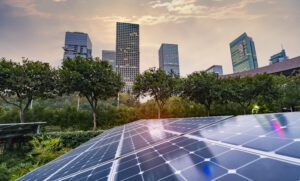In order to strive in this highly competitive world, everyone from a student to a working professional is busy chasing their goals, targets, and deadlines. It is important to remember that since most countries have employed the capitalistic model to drive their economic sectors, it has automatically structured our world in a way that distracts people from focusing on the subjects that are of utmost importance.
In the last several decades, topics like climate change, sustainable development, net-zero future, decarbonization, and more were only brought up in academic discussions and debates. However, recently, amid the breakout of a global pandemic, people from every section of society are stepping to the forefront while bringing changes in their personal and professional choices to control the impacts of climate change.
What is Climate Change?
In this article, we will comprehensively discuss the impacts, causes, and effects of climate change so that you can introspect and better your daily choices to build the way for a greener and more sustainable planet. Now, let us begin by addressing the most fundamental question—what is climate change? In simple terms, climate change refers to the global phenomenon of rapid transformation in natural climate patterns like rain, wind, heat, and more.
While discussing climate change and climate change impacts, it is essential to keep in mind that these changes are primarily caused by human activities. As we sprint towards technological growth and advancements, we completely overlook the deteriorating impact it has been having on the climate.
The emission of carbon and greenhouse gases from power plants, transportation, industries, etc., has led to food supply disruptions, extreme weather conditions[1], frequent wildfires, shorter life expectancy, and more.
The Three Main Causes of Climate Change
1. Increased Use of Fossil Fuels
As mentioned above, in order to develop efficient and highly productive technical industrial and equipment, experts often overlook the energy needs of the instrument. Since most manufacturing industries use gas, oil, and coal for electricity generation, it releases hazardous greenhouse and carbon gases that lead to global warming, ozone layer depletion, pollution, and more. On the other hand, to combat the impacts of climate change, experts have also been designing solutions like electric vehicles, solar panels, windmills, hydropower, and more.
2. Deforestation
Deforestation is another major contributor that leads to rigorous climate change impacts. In order to expand the industrial sector, the owner requires some basic resources like electricity, water, and land. Until a few years ago, forests were untouched spaces that stood for abundance. However, as there has been a significant rise in consumer demands, the need for production sites has also increased.
In order to do this, private companies, sometimes in collaboration with the government, cut down dense forests to clear out spaces for their factories and industries. As most of us know, trees and plants are crucial to maintain the balance between oxygen and carbon dioxide. Cutting down forests disrupts this sense of balance, contributing to many impacts of climate change.
3. Intensive Agricultural Practices
The agricultural sector shares a unique relationship with the impacts of climate change. Amongst all the sectors of society, be it industrial, healthcare, or education, people often tend to underestimate the amount of energy, resources, and raw materials that go into cultivating agricultural spaces and fields.
Agricultural practices emit three different types of greenhouse gases, namely, methane, carbon dioxide, and nitrous oxide. To put it more precisely, carbon emissions are released during planting, tilling, and the application of fertilizers[2] and pesticides. Nitrous oxide is emitted via soil that is not sowed with plants and, lastly, the digestive tracts of animals, resulting in the emission of nitrous oxide.
How is Climate Change Measured Over Time?
Climate change and its impact are measured over time through various indicators and tools. Instrumental records spanning the last century or so provide data on global temperature rises, sea level changes, and shifts in precipitation patterns.
Ice cores from polar regions offer insights into atmospheric conditions and greenhouse gas concentrations over hundreds of thousands of years. Ocean sediments and tree rings serve as natural archives, revealing past variations and climate impacts.
Satellite observations, initiated in the latter half of the 20th century, allow for precise tracking of changes in ice coverage, sea levels, and atmospheric compositions. Collectively, these measurements provide a comprehensive picture of our planet’s evolving climate and its impacts.
Climate Impact Solution
Addressing climate impact requires a multi-faceted solution. Rapid decarbonization of the energy sector, including transitioning to renewables like solar and wind, is essential.
Energy efficiency measures in buildings, transportation, and industries can significantly reduce emissions. Reforestation and afforestation act as carbon sinks, absorbing more CO2. Sustainable agriculture practices help in both mitigation and adaptation. Technological advancements, such as carbon capture and storage (CCS), show promise for reducing atmospheric carbon.
International cooperation, policy-making, and financial investments are crucial for the widespread implementation of these solutions. Additionally, individual actions and behavioral changes, backed by education and awareness, can further accelerate the global response to climate impact.
Effects and Impacts of Climate Change
Before delving into the effects and impacts of climate change, one needs to comprehend that climate change is a vast and abstract term that includes several minute effects and changes. Hence, the impact of climate change is a result of multiple practices that, with time, have proven to be detrimental for the entire ecosystem. Below we have mentioned some of the many direct consequences of climate change:
- Rapid depletion of the ozone layer
- Deterioration of human health and shorter life expectancy.
- Increase in water and hunger crisis, especially in countries that are underdeveloped.
- Fluctuating weather patterns that have led to melting glaciers, increasing temperature of oceans, heavy precipitation, and more.
- On the ground level, climate change can impact the daily life of a common person as it will eventually lead to higher electricity bills, heavy taxes, compromised water quality, expensive insurance plans, and more.
Build a Sustainable World with Schneider Electric
At Schneider Electric, we aim to be a one-stop destination for all your electrical needs and requirements. We carry an expansive and diversified portfolio of electrical products, services, and solutions designed by our team of reliable and futuristic professionals. However, we also believe in optimizing our ways so that we can work in accordance with the changing times.
Since our end goal is to bridge the gap between progress and sustainability, we have taken several carbon pledges that will contribute to building a sustainable and net-zero future. We are planning to achieve carbon neutrality in all our supply chain, manufacturing functions and operations by 2050 so that our future generations can live a life of sufficiency and abundance. Be a part of our visionary journey and combat the impacts of climate change with us today. Explore our site to know more.



